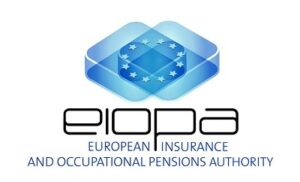The European Union’s insurance authority proposes 100% capital
The European Union’s insurance authority has proposed a blanket rule that would mandate insurance firms to maintain capital equal to the value of their crypto holdings as part of a measure to mitigate risks for policyholders
In contrast to other asset classes like equities and real estate, which are exempt from the requirement to be half-backed, the new plan, which was presented by the European Insurance and Occupational Pensions Authority in a Technical Advice report to the European Commission on March 27, would impose a much higher standard.

In a different statement, it stated that “EIOPA considers a 100% haircut in the standard formula prudent and appropriate for these assets because of their inherent risks and high volatility.”
EIOPA noted that the European Union’s insurance authority regulatory framework for insurers currently lacks explicit provisions on crypto assets, and that such a step would close a regulatory vacuum between the Capital Requirements Regulation and the Markets in Crypto-Assets Regulation (MiCA).
For the European Commission to take into consideration, EIOPA presented four options: mandate an 80% “stress level” to crypto assets, mandate a 100% stress level to crypto assets, and make no changes.
The amount of capital that businesses must hold in order to be solvent is determined by the stress level percentages. The European Commission was urged by the fourth option to take a broader look at the dangers associated with tokenized assets.
Option three would be the best choice, according to EIOPA.
According to EIOPA, “a 100% stress is more appropriate and aligns with one of the approaches to the transitional treatment of crypto-assets under CRR,” while “an 80% stress to the value of crypto-asset exposures does not appear sufficiently prudent.”
The 100% stress is the presumption that the prices of cryptocurrency assets could drop by 100% and that diversification, or distributing the risk among several assets, would not lessen this effect. As noted by EIOPA, Bitcoin BTC have previously dropped 82% and 91%, respectively.
According to solvency capital criteria outlined in the Commission Delegated Regulation 2015/35, a 100% capital charge for crypto assets would represent a significantly tougher approach than equities, which vary between 39% and 49%, and real estate, which carries a 25% capital charge.
According to EIOPA, a 100% capital fee for (re)insurance projects involving crypto assets shouldn’t be “overly burdensome,” and policyholders won’t incur any significant expenses.
“In the event of future material exposures, the capital requirements would effectively protect policyholders by fully capturing the risk of crypto-assets.”Even while EIOPA called it “immaterial,” it noted that the portion of crypto-asset (re)insurance undertakings only amounts to 655 million euros, or 0.0068% of all undertakings in Europe.
EIOPA explained why it suggests option three by stating that “crypto assets are high risk investments which may result in total loss of value.”more information cointelegram









